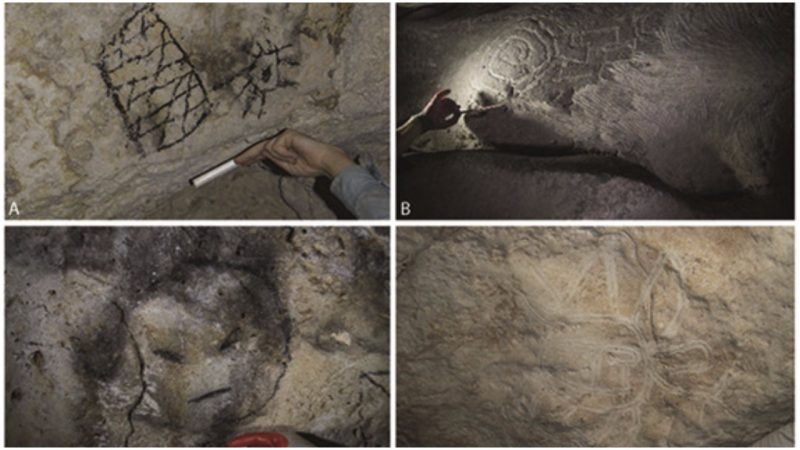The Caribbean region was once home to a thriving group of indigenous people known as the Taino. Not more than one or two generations after Columbus set sail to “discover” the New World, this culture rapidly diminished. Fast-forward some five centuries and amazing new findings shed light on the once-forgotten Taino culture.
A group of British and local archaeologists reportedly stumbled on an abundance of cave artwork on a small, remote island known as Mona. Just a tiny dot on the map, halfway between Puerto Rico and the Dominican Republic, this island has remained uninhabited ever since the Taino disappeared. These previously unknown paintings and images represent original Taino art.
The archaeologists say they have identified at least thousands of Taino art works by entering just 30 caves. Hundreds more caves still remain on the schedule to be re-explored, which means, very positively, more cultural and artistic findings are to be found.
“For the millions of indigenous people living in the Caribbean before European arrival, caves represented portals into a spiritual realm,” stated Jago Cooper of the British Museum, and one of the archaeologists on board the research team set on a mission to rediscover pre-Columbian life on the abandoned Mona island.
As Cooper said, the caves and the art installed in them resembles “the essence of their belief systems and the building blocks of their cultural identity.”
Aside from the British Museum, the research group members come from Cambridge University, Leicester University, and the Center for Advanced Studies of Puerto Rico. They have used techniques such as X-rays and carbon dating to ascertain the age of the cave artwork, and they have pondered what methods were employed by the indigenous to create this splendid art.
As some of their findings suggest, also issued online as of October 2017 in the Journal of Archaeological Science, the indigenous artists used substances such as bat excrement in order to paint some of the images. Over time, this substance absorbed minerals integrated into the caves’ floors, which have yellowish, red and brown colors, and which possibly helped the paintings endure so many centuries without diminishing. Charcoal sticks were also used to produce some of the images.
It seems that the Tainos produced their artwork with ease, by just dragging their fingers over the surfaces of the cave walls. And when they dragged and painted, they also removed the surface layers of the walls of the caves, which are naturally darker in color if compared to the layers lurking beneath.
Not only are the paintings worthy of research, but their location on the island of Mona also speaks volumes about the importance this place had in the times before the European conquests. It is known that people came here throughout the 13th, 14th, and 15th centuries to add more images.
The caves were of crucial importance to the Taino religious system and society, and the objects depicted in the images speak for themselves: religious symbolic faces that have headdresses and animals are just a few of the recurring figures. Also, the indigenous supposedly believed that celestial bodies such as the Moon and the Sun appeared from underneath the surface of the Earth. In this sense, exploring the depths of the caves was unquestionably a very spiritual kind of act, and these seemed to have been their sacred realms.
Other functions were also prescribed for the caves. They served both as burial sites for the deceased, as well as a place where people could connect with their ancestral spirits and the deities they worshiped.
The character of the cave art suggests that the artists consumed plants that had hallucinogenic effects prior to working on new images, which would match early observations of some Taino ceremonies. According to Spanish witnesses in the 16th century, the participants in these ceremonies went into states of deep trance after consuming particular types of plants. It is also what triggered their communication with the other-worldly spirits and figures.
The Tainos are thought to be the first significant indigenous group of people with whom Columbus was able to establish contact and communicate with on his exploration of the New World. Before 1492, some estimates suggest they numbered more than 1 million in population and functioned through a type of mini-states system. As Columbus thought he’d arrived in India, he called the locals “Indians,” and thus these were the first group of New World natives to be given the inaccurate designation.
The entire research project on the Caribbean island is also expected to help people who have a lineage to the Tainos, in order to learn more about their origins. Future analysis of the cave artwork promises to highlight new cultural aspects of these people and their way of life long before any European set foot on their territory.
